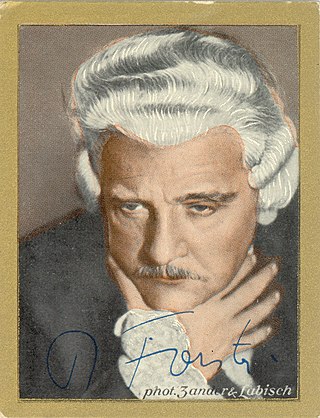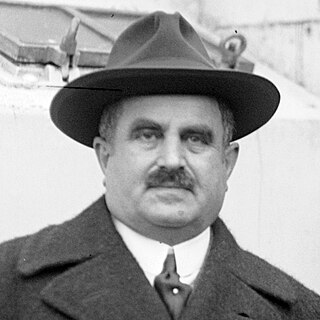Related Research Articles

Augusta Ada King, Countess of Lovelace, also known as Ada Lovelace, was an English mathematician and writer chiefly known for her work on Charles Babbage's proposed mechanical general-purpose computer, the Analytical Engine. She was the first to recognise that the machine had applications beyond pure calculation.

Wilhelm Meister's Apprenticeship is the second novel by Johann Wolfgang von Goethe, published in 1795–96.

Miss Julie is a naturalistic play written in 1888 by August Strindberg. It is set on Midsummer's Eve and the following morning, which is Midsummer and the Feast Day of St. John the Baptist. The setting is an estate of a count in Sweden. Miss Julie is drawn to a senior servant, a valet named Jean, who is well-traveled and well-read. The action takes place in the kitchen of Miss Julie's father's manor, where Jean's fiancée, a servant named Christine, cooks and sometimes sleeps while Jean and Miss Julie talk.

Anna Maria Lenngren, née Malmstedt was one of the most famous poets in Swedish history. Her father and brother were also poets.

Hamlet, or Hamlet: The Drama of Vengeance, is a 1921 German film adaptation of the William Shakespeare play Hamlet starring and produced by Danish silent film actress Asta Nielsen. It was directed by Svend Gade and Heinz Schall. The film was shot at the Johannisthal Studios in Berlin.

Princess Juliane of Saxe-Coburg-Saalfeld, also known as Grand Duchess Anna Feodorovna of Russia, was a German princess of the ducal house of Saxe-Coburg-Saalfeld who became the wife of Grand Duke Konstantin Pavlovich of Russia.

Edwin Richard Wyndham-Quin, 3rd Earl of Dunraven and Mount-Earl, KP, PC, FRAI, FSA, FRGS, FRS, styled Viscount Adare from 1824 to 1850, was an Irish peer, Conservative Member of Parliament, and archaeologist.

Montagu Love was an English screen, stage and vaudeville actor.

Anna Sophia "Sophie" Hagman, néeAnna Kristina "Stina" Hagman, was a Swedish ballet dancer. She was the official royal mistress to Prince Frederick Adolf of Sweden from 1778 to 1793.
Earth Spirit (1895) (Erdgeist) is a play by the German dramatist Frank Wedekind. It forms the first part of his pairing of 'Lulu' plays; the second is Pandora's Box (1904), both depicting a society "riven by the demands of lust and greed". In German folklore an erdgeist is a gnome, first described in Goethe's Faust (1808). Together with Pandora's Box, Wedekind's play formed the basis for the silent film Pandora's Box (1929) starring Louise Brooks and the opera Lulu by Alban Berg.

Princess Eugénie of Sweden and Norway was a member of the royal House of Bernadotte and a philanthropist and amateur artist.

George Gordon Byron, 6th Baron Byron, was a British poet and peer. He is one of the major figures of the Romantic movement, and is regarded as being among the greatest of British poets. Among his best-known works are the lengthy narratives Don Juan and Childe Harold's Pilgrimage; many of his shorter lyrics in Hebrew Melodies also became popular.
Joan de Geneville, 2nd Baroness Geneville, Countess of March, Baroness Mortimer, also known as Jeanne de Joinville, was the daughter of Sir Piers de Geneville and Joan of Lusignan. She inherited the estates of her grandparents, Geoffrey de Geneville, 1st Baron Geneville, and Maud de Lacy, Baroness Geneville. She was one of the wealthiest heiresses in the Welsh Marches and County Meath, Ireland. She was the wife of Roger Mortimer, 1st Earl of March, the de facto ruler of England from 1327 to 1330. She succeeded as suo jure 2nd Baroness Geneville on 21 October 1314 upon the death of her grandfather, Geoffrey de Geneville.

Rudolf Forster was an Austrian film actor. He appeared in more than 100 films between 1914 and 1968. His autobiography Das Spiel, mein Leben was published by Propyläen Verlag in 1967. He was born in Gröbming, Austria, and died in Bad Aussee, Austria.

The Strange Woman is a 1946 American historical melodrama film directed by Edgar G. Ulmer and starring Hedy Lamarr, George Sanders and Louis Hayward. It is based on the 1941 novel of the same title by Ben Ames Williams. The screenplay was written by Ulmer and Hunt Stromberg. Originally released by United Artists, the film is now in the public domain.

Paul Davidson was a German film producer.

Curt Courant was a German-American cinematographer whose work includes more than 100 German and international films from the silent and early sound eras. Courant worked in several European countries, collaborating with figures such as Fritz Lang, Alfred Hitchcock and Charlie Chaplin. As he was of Jewish ancestry, Courant was forced to leave Germany in 1933 and go into exile following the Nazi takeover of power.

James-Alexandre de Pourtalès, Comte de Pourtalès-Gorgier was a Swiss-French banker, diplomat and art collector.

Rosenborggade 7–9 is a complex of mid-19th-century buildings situated at the corner of Rosenborggade and Tornebuskegade, close to Nørreport station, in the Old Town of Copenhagen, Denmark. It consists of a large corner building, an adjacent building in Rosenborggade and a warehouse in the courtyard. The entire complex was listed in the Danish registry of protected buildings and places in 1975. A plaque on the facade of No. 7 commemorates that the philosopher Søren Kierkegaard resided in the building from 1848 to 1850 and that he wrote The Sickness unto Death and Practice in Christianity while he lived there. Other notable former residents include the actors Ludvig and Louise Phister who lived in the apartment on the second floor of No. 7 from 1859 until their deaths in 1896 and 1916.
References
- ↑ Historical Dictionary of Scandinavian Cinema p.286